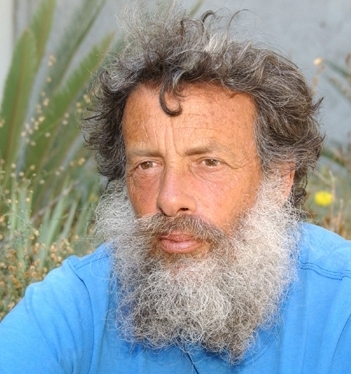
He not only did--they were the larvae of the common buckeye, Junonia coenia--but this was exciting news--a first-of-its-kind discovery that led to a piece published today (Dec. 13) in the News of the Lepitopterists' Society.
The discovery: The plant is a larval host of the butterfly.
This is the first known case of buckeye larvae feeding on Russelia equisetiformis, an ornamental shrub with red tubular flowers that's widely favored by gardeners and pollinators, including hummingbirds.
The news article, authored by Shapiro and de Grassi, is titled "Buckeye, Junonia coenia, Uses the Garden Ornamental Russellia equisetiforis (Plantaginacease) ("Firecracker Plant") as a Larval Host in California."
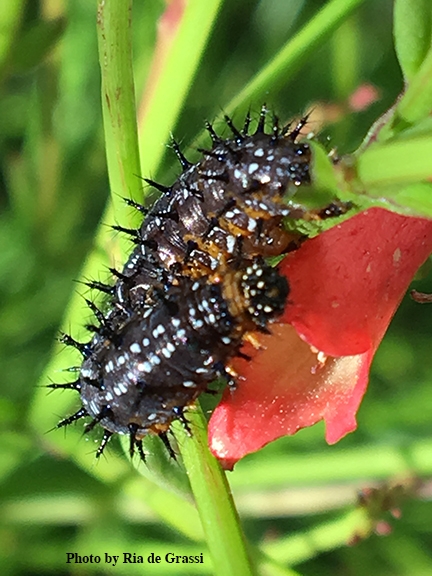
Russelia equisetiformis produces a variety of iridoid glycosides, Shapiro says, but up until July 10, there were no previous records of the buckeye feeding on the plant. The colorful plant, native to Mexico and Guatemala, is especially popular in California and the southwestern United States. It is also known by such common names as "fountain bush" and "fountain plant" for its long arching branches. It can reach a height of 4 to 5 feet.
On his Art's Butterfly World website, Shapiro points out that the "buckeye breeds on plants containing bitter iridoid glycosides, including plantains (Plantago, especially P. lanceolata), various Scrophulariaceae (especially Fluellin, Kickxia), and Lippia (Lippia or Phyla nodiflora). The spiny, black-and-white caterpillar has a bright orange head. Its behavior suggests its diet makes it virtually immune to vertebrate predation, but the pupa and adult are quite edible."
Back in 2010, Shapiro and K. Biggs discovered another larval host of the buckeye--an emergent aquatic plant, Hippuris vulgaris, also known as mare's tail or common mare's tail.
As for Russelia equisetiformis, it draws its genus name from Scottish naturalist Alexander Russell (1715-1768). The species name refers to its resemblance to horsetail rushes (the Latin term equisetiformis means "like Equisteum.")
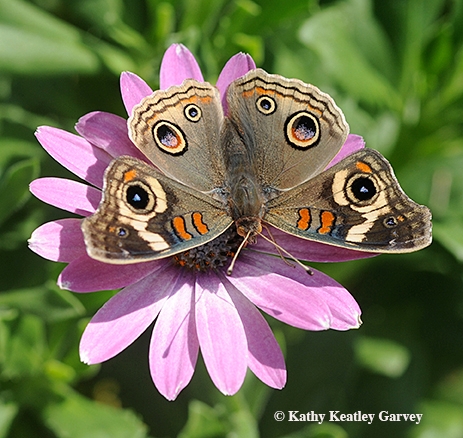
One was a firecracker plant. And along came the buckeyes!
Katie Hetrick, director of Marketing and Communications for the UC Davis Arboretum and Public Garden, wrote about the larval host discovery on the Arboretum website: "It goes to show you that observant home gardeners are important citizen scientists – you never know what discoveries are waiting to present themselves. Now there's yet another reason to love the firecracker plant; not only is it a low-water, long-blooming plant that hummingbirds love, it also appears to be larval host plant for buckeye butterflies!"
As for de Grassi, she continued to see the buckeye caterpillars on her firecracker plant through Aug. 26. And, later, after hearing of her find, Shapiro discovered a female buckeye laying eggs on a firecracker plant by the Sciences Lab Building on the UC Davis campus.
Who knew?
In the piece in News of the Lepitopterists Society, Shapiro wrote that the Russelia equisetiformis "is occasionally cited in horticultural sources as vulnerable to damage by unidentified caterpillars."
Unidentified caterpillars? Mystery solved?
Attached Images:
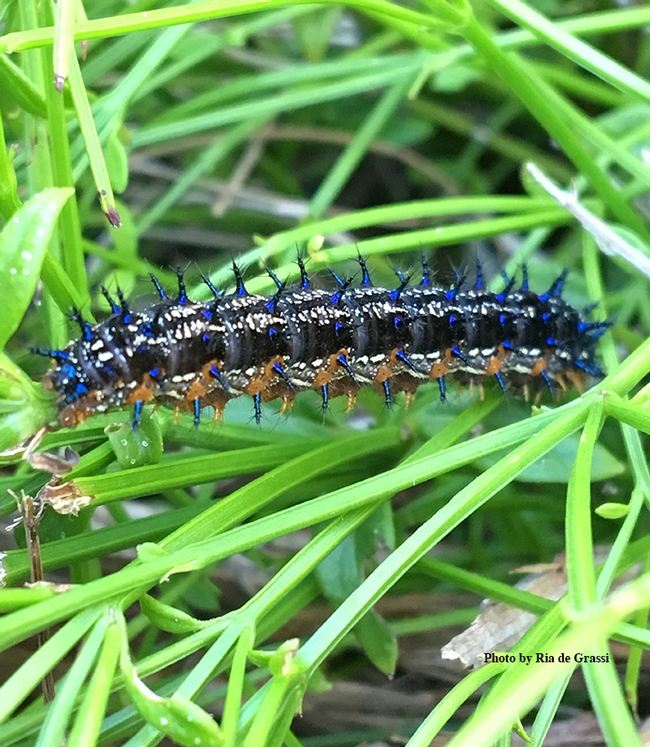
These are the caterpillars (larvae) of the Buckeye butterfly, Junonia coenia, that Ria de Grassi noticed on her firecracker plant. (Photo by Ria de Grassi)
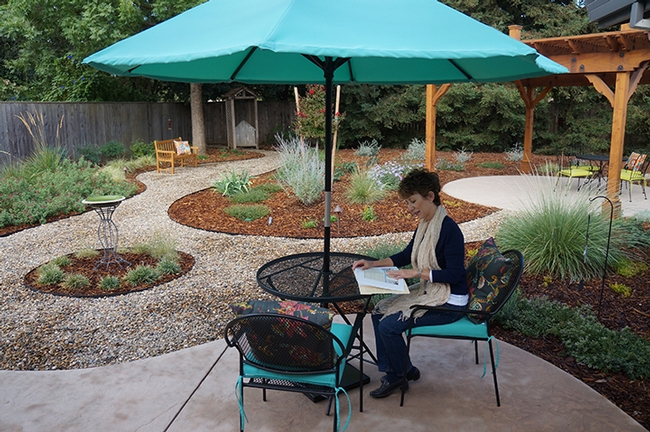
Plant and insect enthusiast Ria de Grassi of Davis, a UC Davis alumna, reads in her newly landscaped backyard, a "Life After Lawn" project. (Photo by Katie Hetrick, UC Davis Arboretum and Public Garden)
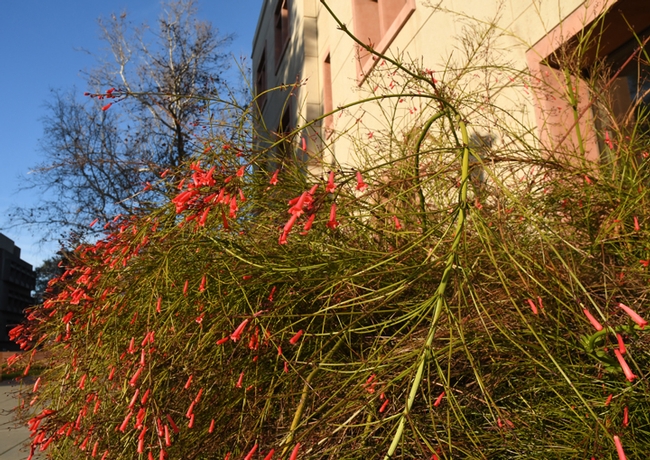
Firecracker plant, Russellia equisetiforis, thrives by the Sciences Lab Building on the UC Davis campus. (Photo by Kathy Keatley Garvey)